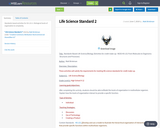
Standards-based activities for HS-LS1-2. Biological levels of organization & complexity.
- Subject:
- Life Science
- Material Type:
- Learning Task
- Date Added:
- 06/07/2018

Standards-based activities for HS-LS1-2. Biological levels of organization & complexity.
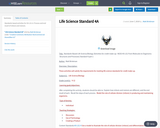
Standards-based activities for HS-LS1-4. Process and end result of mitosis and meiosis.
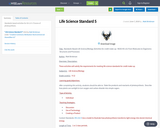
Standards-based activities for HS-LS-5. Process of photosynthesis.

Completing these activities will guide you through satisfying Life Science standards 1 & 2. For this assignment, you will look at a protein and find out how DNA specifies that it is made. To explain how DNA determines structure, you will look at a genetic disease that is based on the function of a protein and then check out how it’s linked to the genetic structure and inheritance.

In this activity, students have the opportunity to witness first-hand the dynamic relationship between Brassica Butterflies and Wisconsin Fast Plants. Students are responsible for tending the butterflies and plants throughout the entire life cycles, while they explore and explain the changes that each organism goes through.
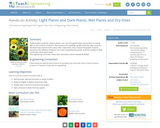
Students plant sunflower seeds in plastic cups, and once germinated, expose them to varying light or soil moisture conditions. They measure growth of the seedlings every few days using non-standard measurement (inch cubes). After a few weeks, they compare the growth of plants exposed to the different conditions and make bar comparative graphs, which they analyze to draw conclusions about the needs of plants.
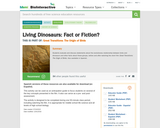
Students evaluate and discuss statements about the evolutionary relationship between birds and dinosaurs and other facts about these groups, before and after watching the short film Great Transitions: The Origin of Birds. This activity can be used as an anticipation guide to focus students on several of the key concepts presented in the film. It also can serve as a pre- and post-assessment.
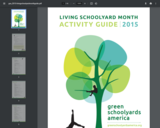
Life Science School Yard Guide. What are Living School Yards? Different Lessons from PK-12 grade outside. Life Science Lessons, activities, experiments, Community and Family Connections.
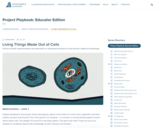
Imagine plunging to microscopic levels and playing a game in the inside of a cell to learn organelles and basic cellular structure and function! This is the goal for our students – to construct a carnival themed game to teach others about cells. The design? Of course! It is the body system. The game and rules? Those are up to our students to creatively express their knowledge of cells’ structure and function.

Students will analyze different pictures to classify them as either living or non-living.

Students learn the function of the liver and how biomedical engineers can use liver regeneration to help people. Students test the effects of toxic chemicals on a beef liver by adding hydrogen peroxide to various liver and salt solutions. They observe, record and graph their results.
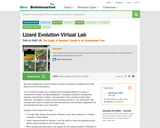
The virtual lab includes four modules that investigate different concepts in evolutionary biology, including adaptation, convergent evolution, phylogenetic analysis, reproductive isolation, and speciation. Each module involves data collection, calculations, analysis and answering questions. The “Educators†tab includes lists of key concepts and learning objectives and detailed suggestions for incorporating the lab in your instruction.
It is appropriate for students in high school biology and environmental science classes, and undergraduate biology, ecology, environmental science courses. The focus on observation, measurement, and experimental methods makes the lab a good fit for addressing "science as a process" or "nature of science" aspects of the curriculum. The emphasis on the collection, analysis, and graphing of data, connects to the mathematical dimension of biology and general goals of STEM integration.

Students in Grades 3 & 4 at Chain Exploration Center developed an understanding of the important role that pollinators play in human food systems as well as in native habitats. Students also learned about the stressors, many of them human-influenced, that are associated with the decline in pollinator populations. Students also learned about ways that humans can improve pollinator habitat. The culmination of student learning was an environmental stewardship project: the installation of a pollinator garden on the school grounds. What follows is an outline of the project process and a discussion of the resources that were used.
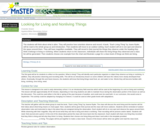
This activity is a field investigation where students begin to generate ideas about what is living and nonliving by observing and recording what they see in a defined area outdoors and later sharing things that they think are living and why.

Wisconsin DNR link to look up most private or public wells. Can use Map View or by unique Well ID number. Well construction information, including geology, construction method, well depth, water depth, well yield and other information about the well.

This course presents a unique and challenging perspective on the causes of human disease and mortality. The course focuses on analyses of major causes of mortality in the US since 1900: cancer cardiovascular and cerebrovascular diseases, diabetes, infectious diseases. Students create analytical models to derive estimates for historically variant population risk factors and physiological rate parameters, and conduct analyses of familial data to separately estimate inherited and environmental risks. The course evaluates the basic population genetics of dominant, recessive and non-deleterious inherited risk factors.
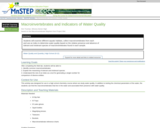
This activity is a field investigation where students can go to a body of water and collect the macroinvertebrates there and identify them. Based on what they find, they can assess the water quality by determining the biotic index. Based on the Macorinvertebrate Mayhem from Project Wet.

Observational data set since 1855 from both Madison area lakes Mendota and Monona from the Wisconsin State Climatology Office and Nelson Institute for Environmental Studies

Context: The Bayfield High School Alternative Education program works collaboratively with the Red Cliff Treaty Natural Resources (TNR) Division on a variety of projects. One of the favorite projects focuses on monitoring carnivores in the Red Cliff/Bayfield area. One component of this project involves the placement of several remote trail cameras within local natural areas. TNR staff help students identify potential camera location areas. Several times throughout the school year, students retrieve the memory cards from the cameras and record observations based on the photos and videos. A second component of this project involves TNR providing the students with regular updates regarding progress of their ma’iingan (wolf) studies. TNR has access to data obtained from radio and GPS collared ma’iinganag (wolves) from a variety of local packs. Through this project, Bayfield students learn about wolf ecology, the cultural value of wolves, and connections to their immediate surroundings.
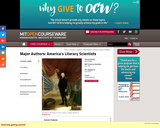
Global exploration in the eighteenth and nineteenth centuries radically changed Western science, orienting philosophies of natural history to more focused fields like comparative anatomy, botany, and geology. In the United States, European scientific advances and home-grown ventures like the Wilkes Exploring Expedition to Antarctica and the Pacific inspired new endeavors in cartography, ethnography, zoology, and evolutionary theory, replacing rigid models of thought and classification with more fluid and active systems. They inspired literary authors as well. This class will examine some of the most remarkable of these authors--Herman Melville (Moby-Dick and "The Encantadas"), Henry David Thoreau (Walden), Sarah Orne Jewett (Country of the Pointed Firs), Edith Wharton (House of Mirth), Toni Morrison (A Mercy), among others--in terms of the subjects and methods they adopted, imaginatively and often critically, from the natural sciences.